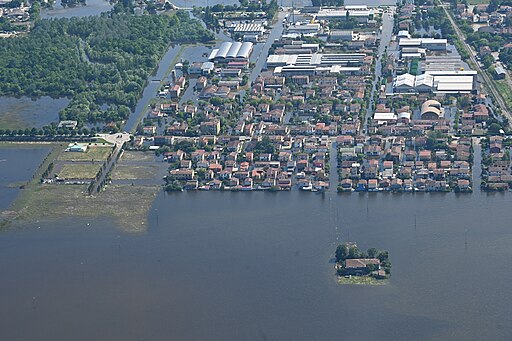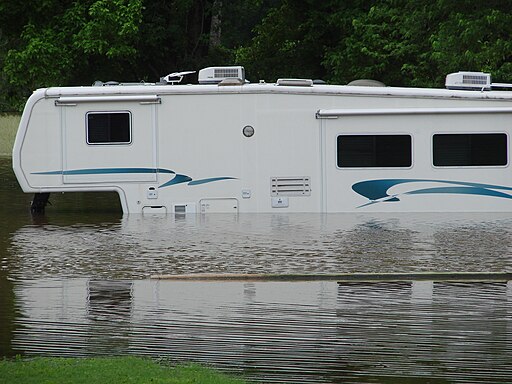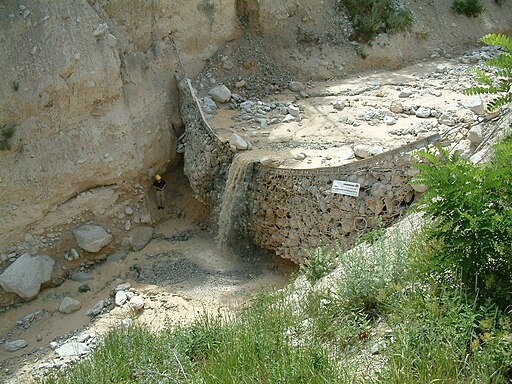
Floods often call people and disaster management by surprise. A list of recent floods shows that inundations are the reason of increasing concern. The list of floods in Italy (in Italian) indicates that 50 victims were reported from 2021 to 2022. An example of a flood that took people by surprise is the event that occurred in Germany during the summer 2021. By looking at recent flood reports we realise that in some cases damages could have been mitigated by reacting promptly and properly. Unfortunately some floods occur very quickly, thus proper education and formation is needed to take rapid decisions.
Education is particularly important. Understanding floods helps to protect ourselves. Awareness of early warning signs and what may happen when we are taken by water is definitely useful for emergency management. By looking at recent floods I realised that learning basic concepts of flood formation and dynamics may help in this regard.
Therefore, I selected ten concepts that I believe should be disseminated. For many of you these concepts may be well known, as they are taught in several academic programmes. However, very often they are treated in the frame of the underlying theory, while lack of time or lack of opportunity may prevent the discussion of their real world implications in terms of recommendations for emergency management. In fact, knowledge of the theory is a fundamental support for a better assimilation of the real world practice.
Thus, after the presentation of the above ten concepts I will provide a list of practical recommendations, by first linking to the guidelines by the National Department of Italy for Civil Protection.

via Wikimedia Commons
Ten concepts on floods
- Flood risk: it is the combination of three components, that is, (a) hazard, which mainly depends on the climatic and hydrological forcing, (b) vulnerability, namely, the degree of protection, and (c) exposure defined as the value - economic or intangible - of the inundated assets and communities (for more details see Bloschl & Montanari (2023; in Italian) and Montanari et al. (2023, in English)). The important concept is that flood risk cannot be eliminated. Protections like nature based solutions, detention basins, levees or others, provide protection up tp a certain extent, but their effectiveness is not unlimited and thus they cannot protect us against devastating events of exceptional magnitude.
- Surprise factor: floods often take us by surprise, despite the continuous improvement of alert systems. One of the reasons of the surprise is the a priori belief that devastating floods - like those that a posteriori happen - are not possible. The belief of impossibility is caused by reasons including: (a) reasons related to how floods happen, like for instance the obstruction of river beds by woody floating debris; (b) psychological reasons - like hazard underestimation; and (c) socio-economic reasons, like for instance the lack of resources to fund protection measures. Actually, flood risk maps (for Italy see here) show that areas exposed to flood hazard are very large and the majority of the population is exposed. To learn more see Bloschl & Montanari (2023; in Italian) and Montanari et al. (2023, in English)
- Risk amplification: extreme floods are often caused by a superposition of drivers that takes us by surprise. These drivers may be hydrometeorological, like for instance the combination of climate change and reduced infiltration by the soil; or socio-hydrological, like for instance the combination of flood hazard and high exposure. Frequently, when disasters occur, driver superimpose each other according to a "non-linear" mechanism, which determines an amplification of flood impact. In such conditions, minimal perturbations of climate may originate highly impactful events. Therefore, an interesting scientific challenge is the identification of the conditions that may lead to such amplification. To learn more see here.
- Flood alert: flood predictions, like meteorological predictions, are affected by uncertainty. Nevertheless, they are extremely useful, provided uncertainty is properly taken into account. In any case, we must be aware that flood alarms are not certain. An alert level that is not the highest should not be taken as a safety signal. Italy has recently introduced the IT-alert system to issue public warnings.

- Predictability: Floods in large river basins are caused by rainfall that is spatially extended, long lasting, and relatively low in intensity. They develop slowly and are therefore more easily predicted; warnings are generally issued in time. Small stream floods are caused by spatially limited, short duration and very intensive rainfall. They develop very quickly, even within minutes, are difficult to predict, and warnings can therefore be less effective.
- Flood memory: The memory of past floods is short; we have no detailed information on floods that happened before 1900. We therefore have little knowledge to identify areas that might be flooded. We often don't realise that some places are not safe at all, simply because we have no memory of previous floods that occurred there. In addition, climate change could increase flood hazard. This is another reasons why floods often take us by surprise. To learn more see here (scientific paper).
- Water forcing: Water has considerable force. The forcing exerted by water on our body, our house or car depends on the squared values of water depth and velocity. That is: if the depth of water or velocity doubles, water forcings is multiplied by four. For example, see this video and note that the depth of the water is limited, but the speed is considerable and thus the forcing.
- Debris floods: In very step terrain the flood flow may incorporate a mixture of mud, gravel and boulders. See for instance this video. The forcings against persons and structures by a debris flow is much greater of the forcing of water alone: actually it may be up to 15-20 times higher. Therefore, debris flows are extremely dangerous events, which may occur in mountain rivers and are very quick. To mitigate the risk, in mountain areas gravel detention basins or other detention structures are often built to capture the debris flow before it reaches roads or inhabited areas. To learn more on debris flows see the Wikipedia page on the flood that occurred in Versilia (Italy) in 1996 (in Italian).

- Coastal flooding: Coastal floods can be caused by fluvial floods or sewer overflows, or storm surges, or tsunamis. The first two causes may superimpose each other, while tsunamis are generated by earthquakes, or rarely by landslide or volcanic eruption. Therefore, tsunamis generally do not have connections with atmospheric extreme events. While a tsunami is usually anticipated by warnings, river floods and especially storm surges can take people by surprise. Volcanic eruptions are a possible cause of tsunamis. Some of the most dangerous volcanoes in the world are located in Italy, including submarine volcanoes (see the Marsili volcano).
- Urban flooding: it is generally caused by sewer overflow. Critical sewer conditions are induced by rainfall of very short duration, i.e., a few minutes. When the sewer system fails, water can flow out of manholes, generating real "geysers," or jets of water that can be sudden and violent. See, for example, this video.
What to do if we are caught by a flood
The National Department of Civil Protection of Italy, in its web site at the page "In the event of flooding", provides recommendation for emergency management and keeping safe. Such recommendations partly derive from the above presented concepts. Other recommendation are given here and here.
I would like to add some recommendations. Some of them are derived from the ten concepts I introduced earlier. And some of them are already mentioned in the above links.
- Don't assume you will never be flooded. The presence of flood protections or proximity to a levee should not make us feel safe. The levee is an indicator of flood risk rather than safety. A levee may be overtopped or may collapse. Flood protections mitigate the risk but do not completely eliminate it. Therefore, it is wise to take precautions. Many actions to mitigate risk do not cost anything and do not impact our everyday lives, so why not?
- Pay attention to alerts that are usually placed into risky areas. Beware of alert systems.
- Get information on past floods that occurred where you live. Today's information and alert systems are very efficient. The web present many videos of floods. Let's try to look at them and learn what we see. Ask yourself what you would do in a similar situation.
- If we are caught by very violent rainfall, if driving is difficult or impossible and water flows over the roads and the ground, we are in a potentially risk situation. If we are close to a river bed it is advisable to evaluate its conditions. Small size torrent and creeks may originate very flashy floods, especially if similar events happened before. To recognise the size of river basin, here are some examples. The Sturla Torrent (Liguria region, Italy) is a small size river; the Secchia River (Emilia-Romagna region, Italy) is an example of medium size, the rivers Po, Arno and Tevere drain large basins.

Recommendations by NOAA. Source: https://www.weather.gov/ Beware that deep waters or rapidly flowing waters are risky (see again this video). Walking into a quickly moving water flow reaching our calves may be difficult if not impossible, and may be impossible to get up after a fall. Driving the car over 20 cm of flowing water is impossible. It is definitely better to leave the car and reach a safe (higher) place.
- The presence of debris or muds into river beds, as well as the presence of alluvial fans where the river reaches the valley bottom, is an indicator of debris flow risk. Try to understand the landscape and identify the areas that are most exposed to risk. During intense rainfall events do not get close to small and steep creeks and torrents covered by debris.

- In coastal areas we should get aware of what drivers might cause a flood so that you can recognize them if the event occurs. Seeking shelter in safe areas should be guided by knowledge of where the flow is coming from.
- Urban flooding does not bring water much higher than street level. However, attention should be paid to rooms below street level and depressed areas in general. Attention should be paid to underpasses. They are normally equipped by pumps to keep them dry, but in fact our experience suggests that they can turn into traps. Keep in mind that the lighting of buildings and roads may be interrupted in the event of a flood, and in the dark the water may not be visible, especially if it is raining. In the dark, it may be impossible to find one's way around and thus impossible to find one's way out of closed and flooded rooms. Therefore, we should avoid standing or getting into closed spaces that might be flooded.
If you interested, test yourself with this flood quiz by the Queensland Government (Austrialia).
I hope the above information is useful. If you have any suggestion or criticism please write me.
Last revised on November 27th, 2023
- 691 views
